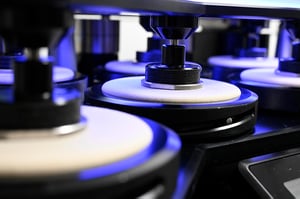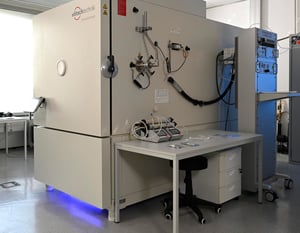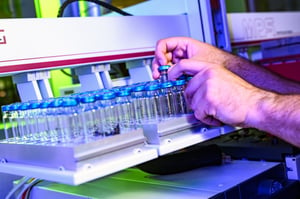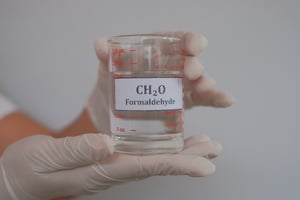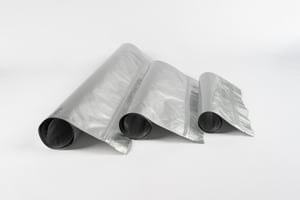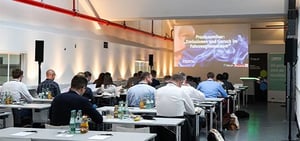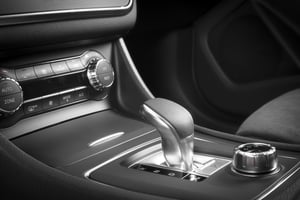
Fogging
Determination of the fogging behavior of materials used in vehicle interiors
FOGGING TEST IN THE
AUTOMOBILE INTERIOR
ENSURING THE DURABILITY OF VEHICLE MATERIALS
In the vehicle interior, materials such as textiles and leather are exposed to heavy wear and tear from clothing and objects on a daily basis. This can lead to wear, discoloration and tears, especially in high-traffic areas such as seats, armrests or steering wheels. Abrasion and scuffing tests are crucial for evaluating these influences and identifying potential weak points at an early stage. Our test methods can therefore make a significant contribution to the quality and durability of the materials used.
With the increasing demand for sustainable materials, the requirements for these tests are also increasing. Suppliers and OEMs must ensure that these innovative materials meet the high requirements of the automotive industry.
- Martindale test
- Taber abrasion test
- Schopper
- Pilling
- Velcro tape
- Rubbing fastness
Martindale test
Determination of the abrasion resistance of textile fabrics using the Martindale method
Taber abrasion test
Schopper
Pilling
Velcro tape
Rubbing fastness

Standards and challenges:
- DIN EN ISO 12947 (Martindale )
- DIN EN ISO 5470-1 (Taber abrasion test )
- DIN 53863-2 (Schopper )
- DIN EN ISO 12945-2 (Pilling )
- VDA 230-210 (Velcro tape )
- DIN EN ISO 105-X12 (rubbing fastness )
Fogging test methods
- DIN 75201-A (reflectrometric)
- DIN 75201-B (gravimetric)
- PV 3015 (Volkswagen)
- GMW 3235-A (General Motors Worldwide)
- PSA D45 1727
- and much more.
Are you looking for an exam? Standard? Specifications?
Accredited & certified tests
CONTACT OUR EXPERTS
Description. Lorem ipsum dolor sit amet, consetetur sadipscing elitr, sed diam nonumy eirmod tempor invidunt ut labore et
- Tab Title






Frequently asked questions about the fogging test
The sample quantities required for a fogging test depend on the standard and the test method used. Here are the general guidelines:
1. standard DIN 75201 (type A and type B)
-
Type A (glass plate method):
A sample quantity of 10 cm² is typically required. The sample is placed on a heated plate in a sealed chamber and the volatiles released condense on a glass plate above. -
Type B (aluminum foil method):
Similar to type A, a sample volume of approximately 10 cm² is used. However, the volatile substances condense on a cooled aluminum foil.
2. standard ISO 6452 (international standard)
- Sample quantity:
Again, a sample size of about 10 cm² is typically required to evaluate the amount of volatiles released at elevated temperature.
3. other specific requirements
Depending on the specific requirements of the customer or OEM standards, sample quantities may vary. It is important to check the respective standards or test requirements carefully.
Method A - Reflectometric method:
- Principle: This method measures the change in reflectivity on a glass plate on which volatile components from the material sample are deposited.
- Procedure: A material sample is heated in a beaker while a glass plate above it is cooled to 21°C. The temperature difference causes the volatile components to condense on the glass plate. The reflectance index of the fogged glass plate is then measured to determine the amount of condensed material.
- Application: This method is particularly suitable for materials for which an exact determination of the optical fog effect is required.
Method B - Gravimetric method:
- Principle: This method measures the weight of condensed volatiles on an aluminum foil.
- Procedure: The material sample is heated in a beaker while an aluminum foil disc is cooled to 21°C. After 16 hours, the amount of condensed material on the foil is weighed.
- Application: This method is ideal for an accurate quantitative determination of the amount of condensed volatiles.
CONTACT US
EMISSIONS & ODOR
Formaldehyd in Fahrzeugen: Herausforderungen für die Automobilindustrie
Read moreStellantis: Freigabe für Emissionsprüfungen erfolgreich (VIAQ)
Read moreVDA 277 vs. VDA 278: Was ist der Unterschied?
Read moreGeruchsunterschiede bei Polypropylen: Die Rolle von Faserverstärkung und Verarbeitungsparametern
Read moreWarum sind die Einheiten der Ergebnisse von Prüfungen der Werkstoffemissionen eigentlich so unterschiedlich?
Read moreGrenzwerte für Formaldehyd und Formaldehydabspaltern in Fahrzeugen
Read moreFREQUENTLY ASKED QUESTIONS ABOUT WEAR TESTS
- Martindale test
- Taber abrasion test
- Schopper
- Pilling
- Velcro tape
- Rub fastness
